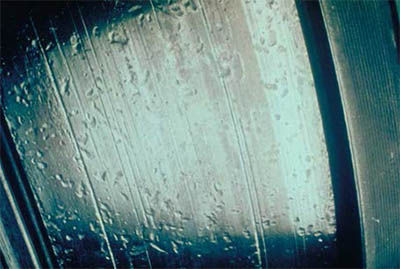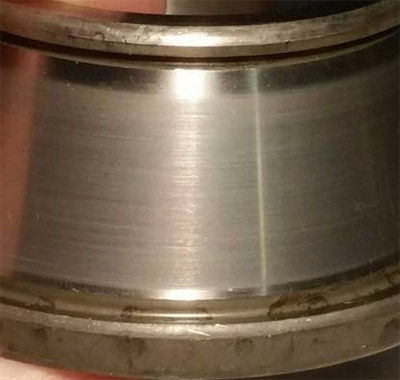Preventing Roller Bearing Failure
Preventing Roller Bearing Failure
THE QUESTION
Expert response provided by Norm Parker, bearing technical specialist for GM’s driveline division at the Milford, MI Proving Grounds:
I’m building a custom gearbox with 7075 T-6 spur gears, and I’m concerned that aluminum flakes will enter the races on the roller bearings (SKF 2307) and cause premature failure. So my question is — should I place an oil seal on the shaft first to protect the bearing — or is this an unfounded concern and I should mount the seal in the typical manner outside the bearing? Or both? Or go with a sealed bearing? I’m confused and could use your expertise, please.
Expert response provided by Norm Parker, bearing technical specialist for GM’s driveline division at the Milford, MI Proving Grounds: Well, I have good news and I have bad news. The bad news is — you will likely get aluminum particles in your bearings. The good news is — it probably doesn’t matter.
Gear material in bearings is literally a 100-year-old problem. There are two broad categories we can put what I will call “solid particle contamination” into. I used to call it “hard particle contamination,” but people kept complaining — “It’s not thaaat hard.” OK — fine; “solid” particle.

Figure 1 Go to http://evolution.skf.com/damage-mechanisms-of-indentations-in-raceways-of-rollingbearings.
- Click image to enlarge
So back to the two camps of particles; we have small and we have large particles. I know — they aren’t “thaaat” large; but what we are talking about are particles that are large enough to create a small stress riser in the surface — which can lead to spall. These particles create dents that are large enough to see. If you made me draw a line in the sand between large and small particles, it would be around 50 microns. You can see in Figure 1 that these dents are quite large — well over 200-300 microns. This type of denting usually comes from something else actually failing. That “something” is often another bearing or some type of external contamination. The debris created by a gear mesh is much finer than this. Gear wear particles are closer to 10-30 microns. Those can still be troublesome if they are in heavy enough concentration, but unlike this visible denting, small debris creates a wear mechanism. Certain wear mechanisms can be a problem for some ball bearing applications, particularly for angular contact bearings that are preloaded and under heavy loads. The particles tend to concentrate in the center of the raceway and can eventually start degrading the surface and lead to premature failures.







